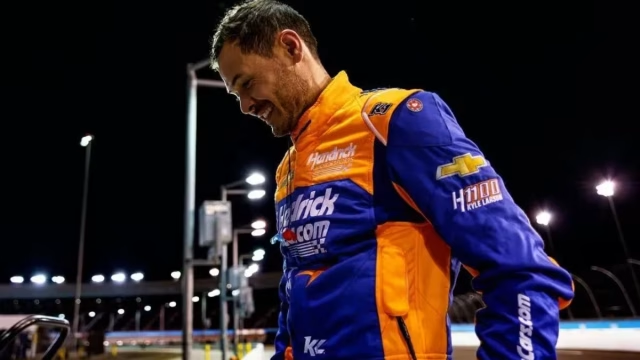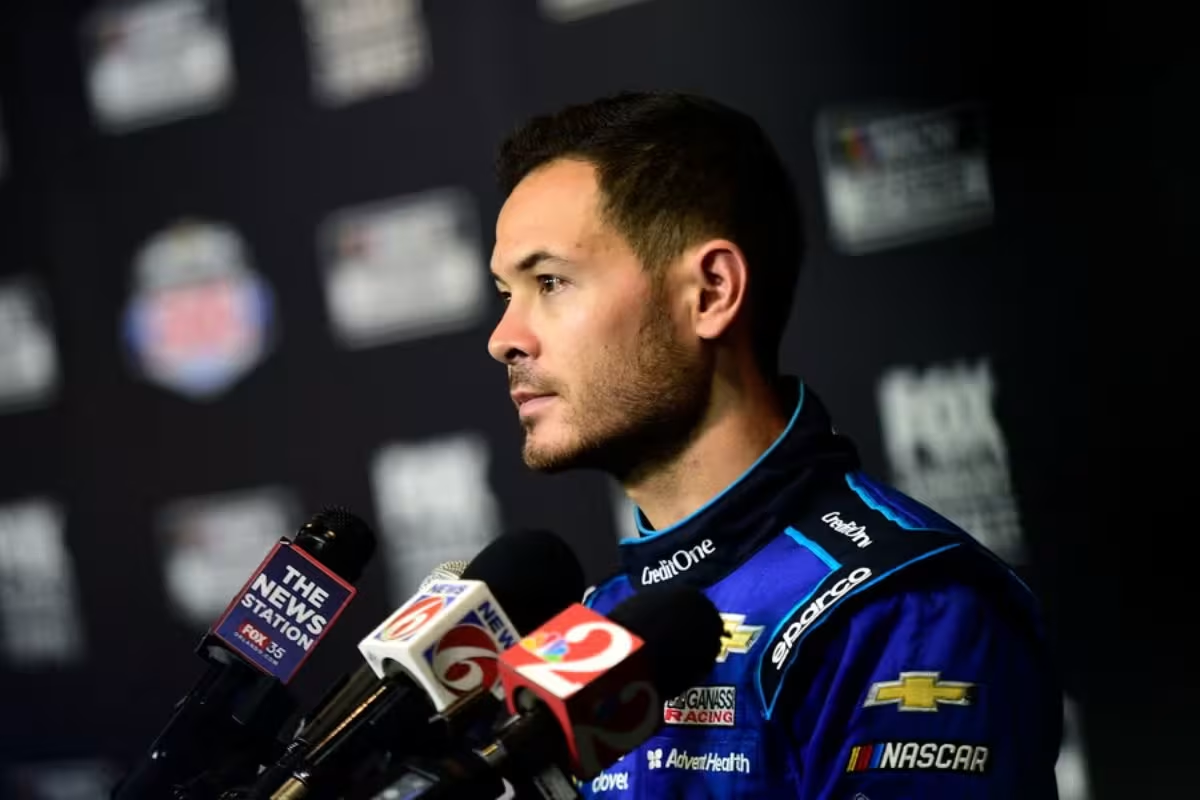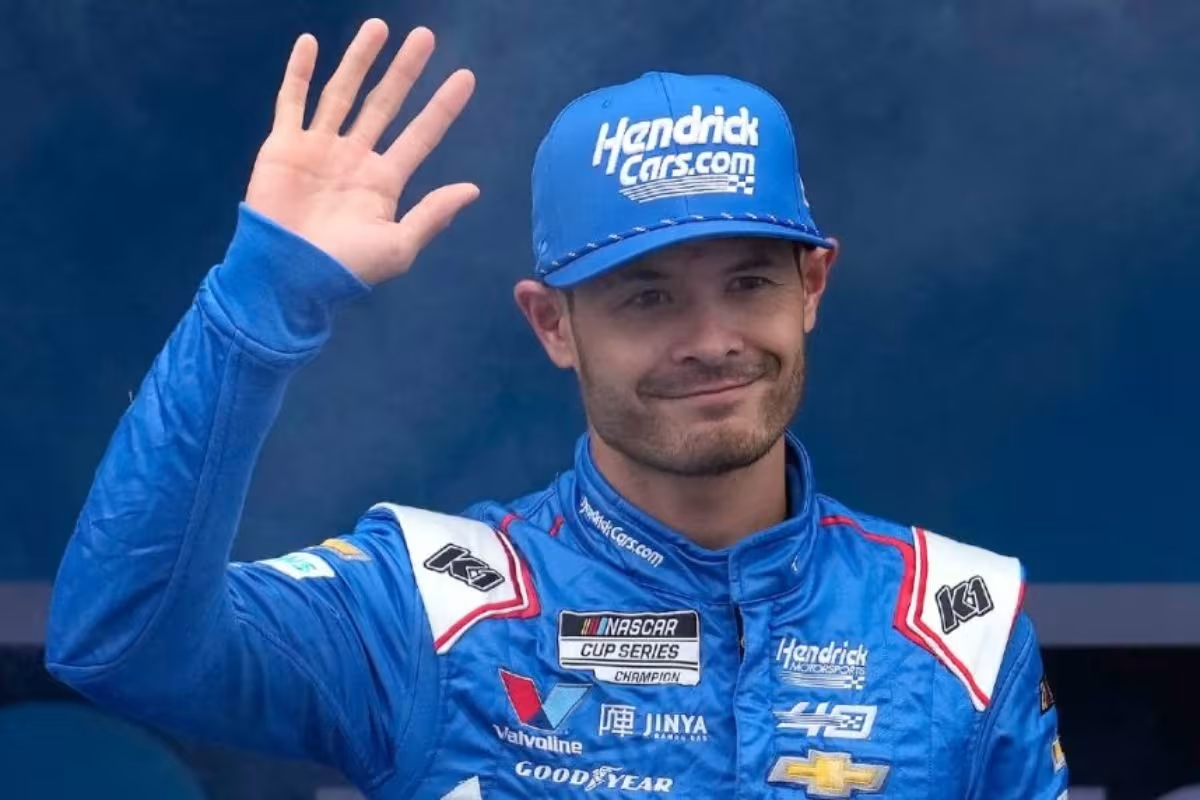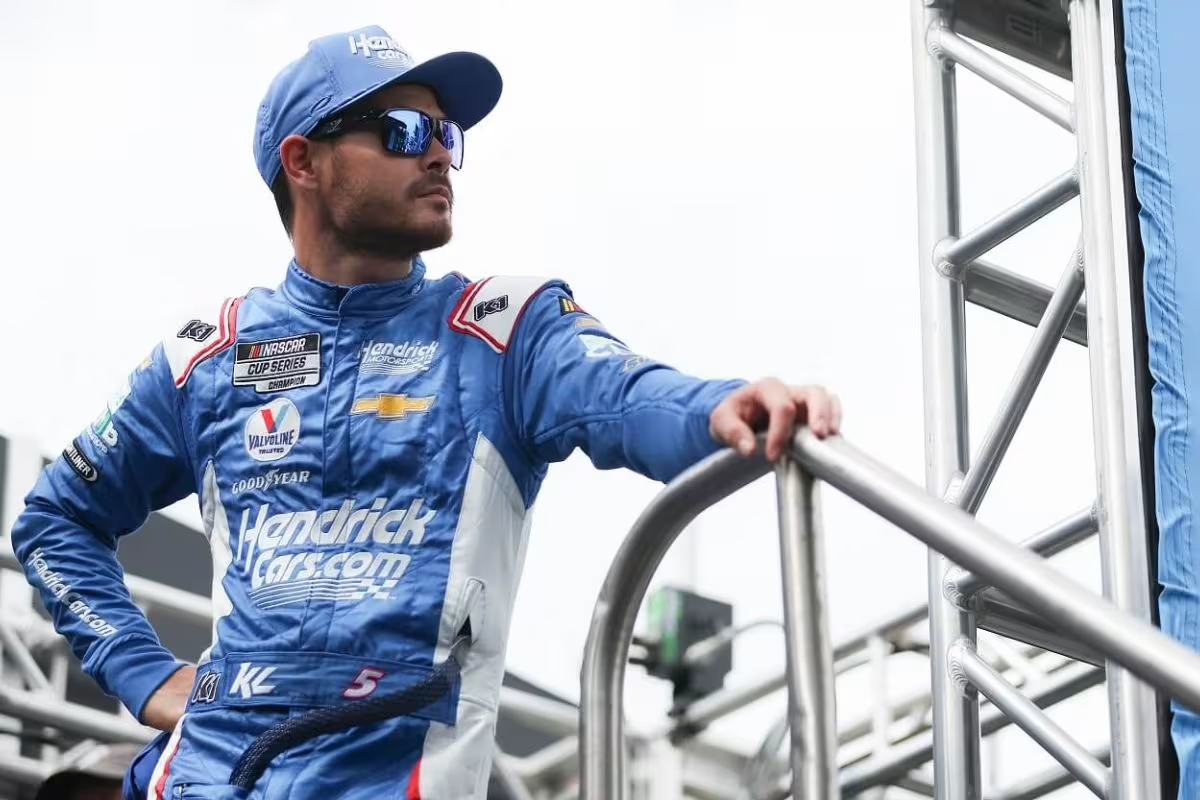Kyle Larson Reveals the REAL Reason for Bristol’s Monotony: Kyle Larson‘s recent remarks in the wake of his striking victory at Bristol highlight a critical tension within motorsports: the tendency of fans to attribute competitive imbalances to tire performance. While Larson’s defense of Goodyear emphasizes the multifaceted nature of racing—where driver skill, strategy, and teamwork converge—his comments also provoke a deeper inquiry into the expectations of fans and their understanding of the sport. As Larson calls for a more nuanced appreciation of racing complexities, one must consider how this dialogue could reshape perceptions of competition in NASCAR. What implications might this have for future discussions about performance and accountability?
Key Highlights
- Kyle Larson defended Goodyear, arguing that racing complexities extend beyond tire performance and involve driver skill and team strategy.
- Fans expressed dissatisfaction with Larson’s dominant win, attributing it to perceived tire issues rather than his driving ability.
- Historical tire performance at Bristol shows low wear, complicating the narrative of tire blame among fans and teams.
- Larson emphasized that oversimplifying race outcomes neglects the nuances of racing dynamics and individual talent.
- His victory marks a historic achievement, reinforcing that driver skill remains central to NASCAR, despite tire performance perceptions.
Kyle Larson Dominates Bristol, Fans Disappointed
Kyle Larson’s commanding performance at the Bristol night race sparked a wave of disappointment among fans, as his dominance rendered the competition largely uneventful. Larson’s ability to lead 462 of the 500 laps highlighted his skill and the superiority of his car, yet this overwhelming control translated into a lack of excitement for viewers. The race’s low television ratings reflected this sentiment, revealing a noticeable disconnect between competitive talent and audience engagement.
Fans expressed their dissatisfaction vocally, attributing the monotony of the event not solely to Larson’s driving but also to the performance of Goodyear’s tires. Expectations had been set for a new tire compound that promised to improve competition through increased falloff. However, the reality fell short, as Larson’s tire management allowed him to maintain speed with minimal pit stops, further entrenching his lead.
This scenario raises pertinent questions about the interplay of equipment performance and driver skill in NASCAR, particularly at a track known for its potential for close racing.
While the frustration expressed by fans is understandable, attributing the lack of competition solely to Larson overlooks the multifaceted nature of race dynamics. Larson’s performance illuminated not only his capabilities but also the need for tire manufacturers to deliver on their promises.
Therefore, rather than assigning blame, it is essential to analyze the broader implications of such a race, considering both the driver’s execution and the equipment’s role in shaping the race narrative.
Kyle Larson Defends Goodyear from Fans
Frequently, the narrative surrounding a dominant performance in NASCAR can overshadow the complexities of the racing environment, as evidenced by the backlash Kyle Larson faced after his Bristol victory. Following his commanding win, Larson found himself at the center of a heated debate, with many fans attributing the perceived lack of competition to Goodyear’s tire performance.
In a candid conversation with SiriusXM NASCAR Radio, Larson articulated his frustration with the tendency to blame tire manufacturers for the outcomes of races, emphasizing the multifaceted nature of racing dynamics.
Larson pointed out that while he led an impressive 462 laps, the reaction from fans often failed to recognize the intricacies involved in a race. His assertion highlights a prevalent issue within NASCAR culture: the oversimplification of race dynamics, where a singular narrative of dominance is met with discontent.
He argued that attributing the race’s perceived dullness solely to Goodyear detracts from the skill and strategy exhibited by drivers and teams.
Larson on Tire Complaints and Fan Reactions
The recent backlash from fans regarding tire performance at Bristol has prompted Kyle Larson to address the misconceptions surrounding Goodyear’s role in racing dynamics. Larson further clarified that the issues seen in the race were not solely attributable to Goodyear or NASCAR. This insight reveals that even drivers, teams, and engineers are grappling with the same questions.
“I don’t really ever get on social media anymore. But no, I was just annoyed; you know, like, there’s so many people in the industry that, you know, they see a car lead 462 laps, and they’re, you know, they automatically think it’s a terrible race.”-(larson)
To better understand the complexities surrounding tire performance, consider the following:
- Historical Performance: Tire wear at Bristol has been consistently low, challenging assumptions about current performance.
- Collective Uncertainty: The lack of clarity affects all stakeholders, from drivers to manufacturers.
- Fan Perception: Misunderstandings can lead to misplaced blame, complicating the dialogue around race dynamics.
- Continuous Improvement: The sport thrives on evolving technology, and solutions are often incremental rather than immediate.
Larson’s thoughtful reflections encourage a more nuanced discussion, urging fans to recognize the intricacies of racing beyond surface-level complaints.
Larson Defends Goodyear and NASCAR
Larson’s defense serves a dual purpose: it not only protects Goodyear’s reputation but also highlights the broader implications for NASCAR. The perception that tire performance directly correlates with race outcomes can undermine the skill and planning inherent in racing. Larson’s performance exemplifies the unpredictable nature of the sport, where individual talent can overshadow equipment concerns.
“There’s never been tire wear at Bristol, besides one race in the last 10 years. So it’s like that everybody forgets about the past, and then too. So like, Yeah, everybody wants to blame Goodyear, and everybody’s got the answers and whatnot. ou know, us, the drivers and the teams and engineers, don’t have the answers either. So it’s just, I don’t know.”-(larson)
Ultimately, Larson’s strong advocacy for Goodyear is a reminder that the core of NASCAR lies in the interplay of driver skill, teamwork, and tactical execution rather than merely attributing performance to tire quality.
“It’s I’m just, in a way, trying to defend our sport and defend a good year, because they get such a bad rap every week, like they’re the problem of why racing stinks, so it’s not them.” -(larson)
🗣️ "Just frustration I guess."@KyleLarsonRacin on why he took to social media to address the overwhelming negative responds to his dominant @ItsBristolBaby win.
🤷🏼♂️ "Nobody has the answers."
Full Interview → https://t.co/MKhd9eLXG8 pic.twitter.com/JWbbArfeb4
— SiriusXM NASCAR Radio (Ch. 90) (@SiriusXMNASCAR) September 25, 2024
Larson’s Historic Victory at Bristol
Witnessing Kyle Larson’s historic victory at Bristol was a demonstration of both his exceptional driving skills and the tactical expertise of his team. Securing his fifth win of the season, Larson’s dominance at Bristol is highlighted by the fact that he led an astounding 462 laps—a feat not achieved since 1977. This victory not only solidifies his position at the top of the playoff standings but also sets the stage for potential title contention as the season progresses.
To commemorate this noteworthy win, Larson took his son Owen on a celebratory victory lap, emphasizing the personal joy intertwined with professional achievement. He attributed the success to his team’s impeccable performance, which enabled him to pilot a car capable of such domination.
Key factors contributing to Larson’s historic victory include:
- Strategic Pit Stops: Timely and efficient pit work guaranteed Larson maintained his lead.
- Car Setup: The team’s engineering provided a competitive edge, optimizing speed and handling.
- Driver Focus: Larson’s concentration and skill under pressure allowed him to navigate the track expertly.
- Historical Context: Leading 462 laps at Bristol places Larson in elite company, reviving discussions on the nature of competition in NASCAR.
While some may debate the excitement level of the race due to Larson’s supremacy, his performance is a reflection of both individual talent and exemplary teamwork.
The narrative surrounding this win will certainly spark ongoing conversations among fans and analysts alike.
News in Brief: Kyle Larson Reveals the REAL Reason for Bristol’s Monotony
Kyle Larson’s recent remarks show the multifaceted nature of competitive racing, challenging the prevailing tendency among fans to attribute outcomes solely to tire performance. By emphasizing the importance of driver skill, tactical decision-making, and collaborative teamwork, Larson advocates for a more nuanced understanding of the sport. This perspective not only defends Goodyear against unwarranted criticism but also encourages a deeper appreciation for the complexities inherent in NASCAR racing dynamics.
ALSO READ: Kyle Larson Backs NASCAR’s 2.3 Billion Dollar Partner Amidst Fan Outcry Over Bristol Race



